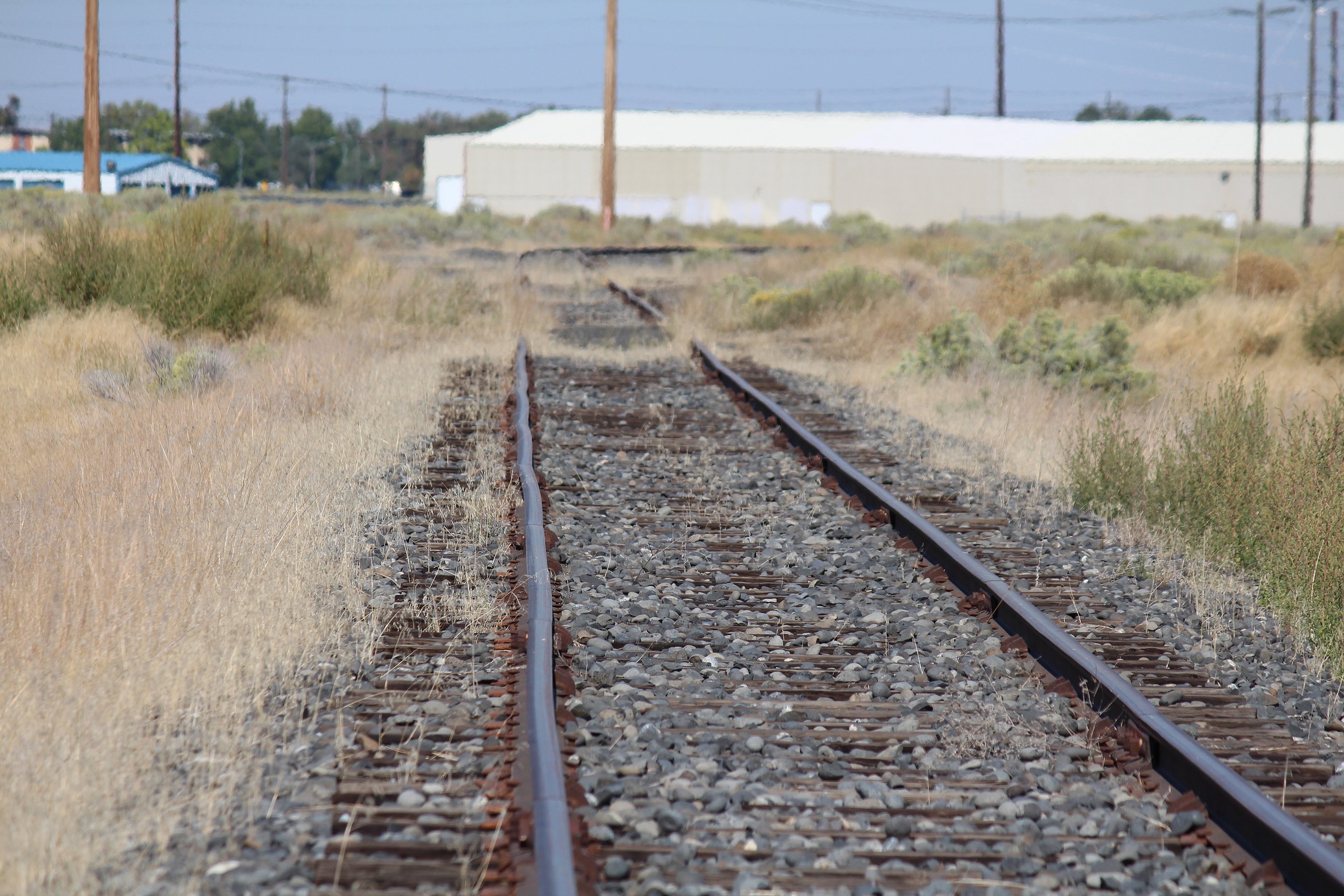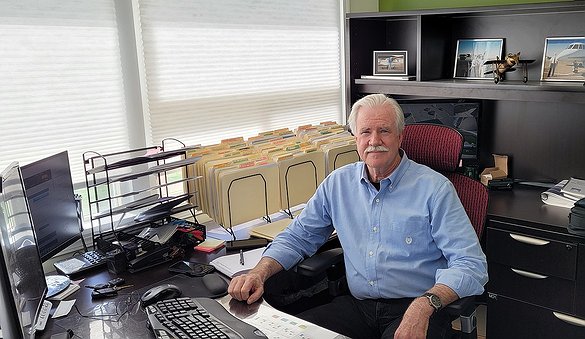Grant Co. rail expansions to aid economic growth
MOSES LAKE — Four Grant County port districts are working on projects to expand rail transport options available to existing and future businesses. The ports of Moses Lake, Quincy, Warden and Ephrata are researching, designing, planning and getting ready for construction to expand or add rail service. Some received federal or state funding this spring.
Representatives of each of the ports said the expansion of rail service in and around the county would help draw additional tenants to the port and likely the county as a whole. The expansion would provide options for manufacturers and others to bring in needed supplies. It will broaden the area’s cargo transport options to add rail to easy access to air, over-the-road and river-based industrial transport.
Cougar country
The Port of Warden, which is handling the grant applications and finances for the incoming Connell Rail Interchange Project, recently received final approval from the Washington State Department of Transportation for the project’s funding, according to port Executive Director Pat Millard.
“It's a big step,” Millard said. “This will give them (approval) that they can move on.”
With the project moving forward, Millard said she can’t be sure of a construction date, but it has to be completed by June of 2027 due to federal funding requirements. The project was recently awarded an additional $4 million of federal appropriations funding, bringing the total funding for the project to $18.5 million.
According to the City of Connell website, the project will improve rail efficiency at the interchange, which is where the Columbia Basin Railroad enters into the BNSF Railway mainline. That intersection is expected to allow better flow and prevent trains from blocking each other. It will also eliminate the need for locomotives to visit a separate yard to turn around.
Mavs territory
Port of Moses Lake officials expect to complete the right of way and property acquisition by July or August on a project to bring rail service back to port property. Port Facilities Director Milton Miller said project design is complete, and a contract should be awarded by year’s end.
“That will be a great Christmas present,” said Kim Detrolio, director of finance and administration for the Moses Lake port district.
The new rail line will reconnect the port with the BNSF lines in operation near Moses Lake, which has seen growth both at the port and around town as aerotech and green energy technology businesses grow in the community..
The goal is to restore rail service to the Grant County International Airport and the businesses along Wheeler Road. Rail service to the airport ended in 2009, although the railroad tracks still run through Moses Lake.
The project has been awarded both federal and state support, $20 million in 2016, $10 million in 2018 and $3 million in 2022. The money awarded in 2022 was released earlier this spring.
Miller said about 5 miles of new track will be built. The project will include repairing about 3.5 miles of existing track near Patton Boulevard leading to the port.
The new rail section will run south of Wheeler Road, cross Wheeler about one to two miles west of State Route 17, run along Road 4 NE and connect with the existing line. The new section will require a bridge across Crab Creek and a rail crossing on Wheeler Road.
Tiger town
The Port of Ephrata has been looking into options for expanding its existing rail infrastructure, according to the port’s Executive Director David Lanman. This will bring rail into the mix of available transportation options at the port, which already has air and over-the-road access for companies operating on the port to access, making the port transmodal.
“We are a candidate for and are working to try to secure certification from BNSF to be a transmodal facility,” Lanman said. “That decision, we have been told, will be made in November, so we're in the application process right now.”
Lanman said potential benefits of receiving the transmodal facility status would help draw commerce to the port in multiple ways.
“We are growing on the industrial park side and getting certified as a transmodal facility would enable us to qualify and give us a better capability of securing funding to develop that 65-acre facility,” Lanman said. “Having a facility in the works would make us a more attractive destination for manufacturing firms, distribution centers, etc., etc., because they would have direct access to rail to be able to move their goods … Our spur connects directly to the main Seattle-Chicago rail, so we have an opportunity there to really provide an incentive for people to come here.”
The status would require the port to expand its rail facilities but would assist economic development at the port.
“The certification sort of gives you a ‘Good Housekeeping’ seal type of approval. It's a marketing (aid). You have BNSF on your side out there bringing in candidates for you to take a look at,” Lanman said. “It just would really be a big help. Now, do we need BNSF to give us that certification to do this? No. We could do it ourselves, but that would certainly be a big help.”
Lanman said the Ephrata port is seeking status as a transmodal facility rather than as an intermodal facility because an intermodal facility is more open to serving clients outside of the port.
“We're more focused on trying to develop a facility that would really cater to the needs of our tenants and consequently make our destination more valuable and attractive for a firm that wants to be close to a rail that they can depend on,” he said.
According to Lanman, BNSF indicated that the port would have to allocate about 65 acres for the transmodal facility itself, which would include additional spurs and other expansions to the existing rail complex.
“We would upgrade and enlarge the warehousing facilities that are there now and have to have acreage for storage of flattened boxcars that would be there until needed,” he said.
At Lanman’s suggestion, the port recently canceled the demolition of two WWII-era hangars on the port, because it was less expensive to upgrade and maintain them than to demolish them and replace them.
Lanman said he wants to ensure the port does its due diligence in deciding to invest in the transmodal facility.
“We're not going to dive into spending multiple, multiple millions of dollars and then it (does) not work for us. No, the certification is just the first step,” he said. “We're doing other things besides this; this isn't a make or break for us, but it would certainly be something I think could be very promising for us.”
Jacks’ tracks
Port of Quincy officials are working on a possible expansion and extension, both in the port’s current rail terminal and to nearby industrial-zoned properties, expanding east across Road O Northwest to serve properties recently annexed into the city. The port received $2 million in funding from the Washington Legislature and $2.5 million from the U.S. Congress, announced in March.
Port Director Patric Connolly said the expansion is prompted by a possible tenant for the property, known as Project Zion. A rail connection is one requirement of the prospective tenant, Connolly said.
The $4.2 million is only the first phase of the needed funding, Connolly said. The total project cost will be about $16 million. The design has been completed, and most of the funding received this spring will be spent on construction.
If the project materializes, the expansion will be a big project, so port officials want to get started on it, Connolly said.
Gabriel Davis may be reached at gdavis@columbiabasinherald.com. Cheryl Schweizer can be reached via email at cschweizer@columbiabasinherald.com.







